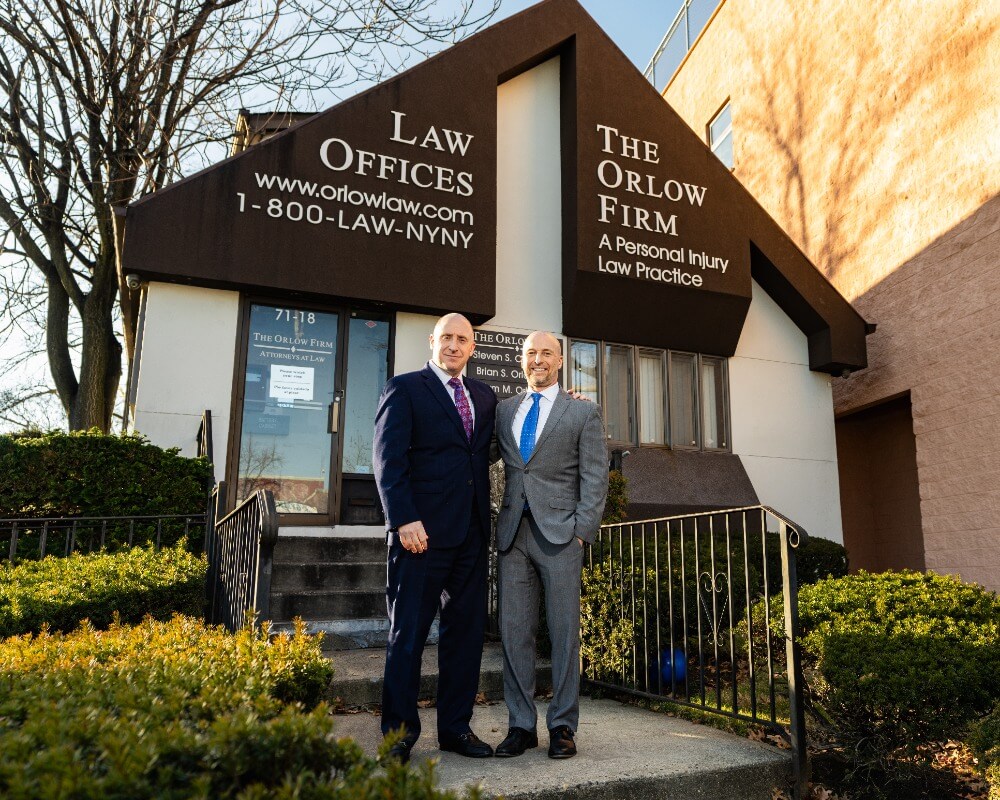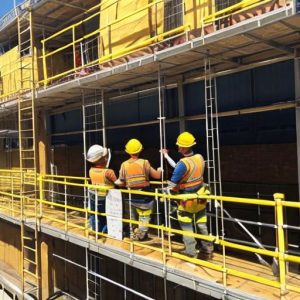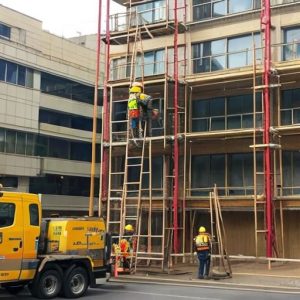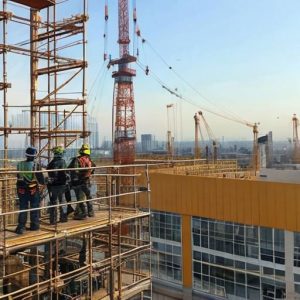PRACTICE AREA
Contact The Orlow Firm Today!
Our attorneys are ready to help you.
New York City Scaffolding Accident Lawyers
Table of Contents
ToggleScaffold Accident Law Firm with Offices in Manhattan, Queens, Brooklyn & The Bronx

Key Takeaways:
- The Orlow Firm specializes in scaffolding accident cases, offering unparalleled legal guidance.
- Victims of scaffolding accidents can claim compensation for medical bills, lost wages, and other damages.
- Call (646) 647-3398 For A Free Case Evaluation
How The Orlow Firm Can Help You Maximize Your Case

Expert Legal Advice: Our team of New York City Scaffolding Accident Lawyers is well-versed in all laws and regulations surrounding scaffolding accidents. We offer tailored legal advice, ensuring that you are aware of all your rights and the avenues for compensation available to you.
Comprehensive Investigation: To build a strong case, we conduct an exhaustive investigation into the circumstances surrounding the accident. We collect evidence such as photographs, witness statements, and medical reports. We also liaise with experts in construction and medical fields to strengthen your case.
Identification of Liable Parties: Identifying who is at fault is crucial for scaffolding accident cases. We meticulously analyze all elements, including the construction company’s role, any equipment defects, and site conditions to determine the responsible parties.
Skilled Negotiation: Insurance companies often try to minimize the compensation they have to pay out. Our experienced attorneys excel at negotiating with insurance companies, ensuring you get the fair compensation you deserve without unnecessary delays.
Legal Representation: If the case goes to court, you can count on The Orlow Firm to provide robust legal representation. Our attorneys are experienced litigators who have successfully handled numerous scaffolding accident cases in New York courts.
Contingency-Based Fees: Our legal fees are based on a contingency model, meaning we only get paid if you win. This ensures that we are as committed as you are in obtaining the maximum possible compensation for your injuries.
Client-Centric Approach: At The Orlow Firm, you’re not just another case; you’re a valued client deserving of personalized attention. We maintain open communication throughout the legal process, ensuring you’re kept in the loop at every stage.
Streamlined Paperwork: Legal cases involve a significant amount of paperwork, including filing claims, collecting evidence, and drafting legal documents. We handle all these aspects efficiently, allowing you to focus on your recovery.
Time-Sensitive Action: The statute of limitations for scaffolding accident cases in New York is generally three years, but it’s essential to act quickly. Immediate action helps to preserve evidence and strengthens your claim, which is why we prioritize a swift and efficient legal process.
Maximized Settlements: Our primary goal is to secure the maximum possible compensation for you, including medical bills, lost wages, pain and suffering, and any other relevant damages. Our track record demonstrates our commitment to achieving the best financial outcome for our clients.
In summary, The Orlow Firm’s comprehensive services aim to navigate the complexities of scaffolding accident claims on your behalf. From initial consultation to settlement or trial, our focus is on maximizing your compensation while minimizing your stress. Don’t hesitate; every moment counts. Call us today at (646) 647-3398 for a free case evaluation.
The Orlow Firm’s Successful Construction Accident Claims:
- $3,375,000 for a construction worker who fell 12’ off a ladder. He injured his neck, back, elbow and shoulder. Both his neck and back required surgery.
- $3,000,000 for construction worker who fell from a ladder sustaining a fractured femur requiring surgery as well as back injuries requiring surgery.
- $2,500,000 for a construction worker who sustained injuries to his lower back requiring surgery when a wall collapsed on to the forklift he was operating.
- $2,100,000 verdict for an undocumented construction worker who fell off a scaffold. He sustained injuries that required surgery to his elbow and shoulder.
- $2,000,000 for a maintenance worker who fell while going down a cellar ladder. The fall caused injuries to his back that required surgery.
- $1,850,000 for construction worker who was in the process of transporting an elevator platform when it toppled over into him causing an injury to his back which required surgery.
- $1,750,000 Client was a construction worker who fell down stairs while carrying a bundle of metal studs. He injured his back requiring surgery.
- $1,750,000 settlement for a construction worker who sustained a fractured ankle when he fell off a ladder. His ankle required multiple surgeries.
- $1,600,000 for a construction worker injured when he fell down a temporary staircase which was shaking and not properly secured to the ground. He sustained injuries to his back requiring surgery which prevented him from working.
- $1,375,000 for a construction accident in which a man fell from a scaffold, injuring his back and knee. The settlement was established through mediation.
What Can You Be Compensated For in a New York City Scaffolding Accident?

Economic Damages
Medical Expenses: The cost of medical care can escalate rapidly, especially if you require ongoing treatment, surgeries, or rehabilitation. You can claim costs for doctor visits, surgeries, medication, physiotherapy, and any other medical necessities.
Lost Wages: If your injuries have rendered you unable to work, either temporarily or permanently, you can seek compensation for lost income. This includes not only immediate lost wages but also potential future earnings if you can no longer perform the same job as before.
Property Damage: If any of your personal property, such as tools or equipment, was damaged in the accident, you might be eligible for reimbursement for repairs or replacement.
Out-of-pocket Expenses: These could include anything from the cost of hiring help for household chores you can no longer perform to travel expenses for medical appointments.
Non-Economic Damages
Pain and Suffering: Unlike economic damages, pain and suffering are subjective and can vary significantly from one individual to another. Compensation in this category is meant to offer some monetary relief for the physical pain and emotional distress you’ve experienced as a result of the accident.
Emotional Distress: In addition to physical pain, scaffolding accidents can have a significant emotional impact, leading to conditions like anxiety, depression, or PTSD. Compensation for emotional distress aims to alleviate some of this psychological burden.
Loss of Consortium: If your injuries have adversely affected your relationship with your spouse, you may be entitled to compensation for loss of companionship, affection, and sexual relations.
Quality of Life: Sometimes, accidents can lead to disabilities that diminish your ability to enjoy life as you did before. This category seeks to compensate for that loss.
It’s important to work with experienced New York City Scaffolding Accident Lawyers to determine the types of damages you may be entitled to and how best to pursue them. Understanding what you can be compensated for is the first step toward securing the financial support you need to recover. If you have further questions or need a case evaluation, don’t hesitate to call us at (646) 647-3398.
Who’s Legally Responsible in a New York City Scaffolding Accident?
Determining who is legally responsible for a scaffolding accident in New York City is crucial for pursuing a successful personal injury claim. Responsibility can often be shared among multiple parties, depending on the specific circumstances of the accident. Below are some common parties that may be held liable:
Employers and Contractors
Often, the employer or contractor supervising the worksite is responsible for maintaining a safe environment. Failure to properly train workers, implement safety measures, or provide adequate equipment can lead to their liability.
Scaffold Manufacturers and Suppliers
If the scaffolding equipment was faulty due to design or manufacturing defects, the manufacturer or supplier could be held liable for injuries caused by such defects. Product liability claims can be filed in these instances.
Property Owners
In New York, property owners have a legal obligation to maintain safe conditions on their premises. If they were aware, or should have been aware, of the unsafe scaffolding and did nothing to rectify it, they might be held responsible for any resultant accidents.
Subcontractors and Third Parties
In complex construction projects, multiple subcontractors may be involved in different aspects of the job. Any of these subcontractors could be held liable if their actions or negligence contributed to the scaffolding accident.
Government Entities
If the scaffolding accident occurred on a publicly-owned property, a government entity could be held liable. However, it’s crucial to note that claims against government entities often have special filing requirements and shorter deadlines.
Co-Workers
While less common, it is possible for a co-worker to be held liable if their negligence or intentional actions directly led to the accident. This is generally only the case when the co-worker’s conduct was exceptionally reckless or harmful.
Insurance Companies
While not directly responsible for the accident, insurance companies play a significant role in the compensation process. Depending on the policies held by liable parties, an insurance claim may be the primary avenue for obtaining compensation.
Determining who is legally responsible can be complex and often requires a thorough investigation involving experts in engineering, occupational safety, and other fields. This is why working with skilled New York City Scaffolding Accident Lawyers can be invaluable in navigating the complexities of legal responsibility and liability.
For personalized guidance on identifying who may be legally responsible in your scaffolding accident case, don’t hesitate to contact us at (646) 647-3398.
Types of Injuries Sustained in New York City Scaffolding Accidents

Physical Injuries
Fractures and Broken Bones: Falling from a height or being struck by falling objects can easily result in broken bones, especially in the arms, legs, and ribs.
Head Injuries: A fall from scaffolding or a hit from falling debris can cause traumatic brain injuries (TBI), ranging from concussions to more severe forms of brain trauma.
Spinal Cord Injuries: Falls or impacts can lead to spinal injuries, potentially resulting in permanent paralysis or other forms of impairment.
Cuts and Lacerations: Sharp edges and debris on or around scaffolding can cause significant cuts, requiring stitches or even surgery.
Burns: Electrical, chemical, or fire-related accidents on scaffolding can result in burns that require immediate and specialized medical treatment.
Respiratory Issues
Asphyxiation: If safety protocols are not followed, or if there is a malfunction with harnesses or other safety equipment, workers may be at risk for asphyxiation.
Toxic Exposure: Some scaffolding projects may involve the use of hazardous chemicals. Inhalation or contact with these substances can cause respiratory issues.
Emotional and Psychological Injuries
Post-Traumatic Stress Disorder (PTSD): The psychological impact of a scaffolding accident can be severe, leading to conditions like PTSD.
Anxiety and Depression: The stress and life disruption caused by the accident and subsequent injuries often lead to anxiety and depression.
Long-Term and Permanent Injuries
Disfigurement: Severe injuries may lead to permanent disfigurement, affecting not just physical appearance but also future employment opportunities and quality of life.
Chronic Pain: Some victims suffer from long-lasting pain that affects their ability to perform daily activities and impacts their overall well-being.
It’s vital to consult medical professionals immediately following a scaffolding accident to assess the extent of your injuries. This not only ensures your physical well-being, but it also plays a crucial role in any subsequent legal actions you may take. Trusting experienced New York City Scaffolding Accident Lawyers can help you properly document your injuries and build a strong case for compensation. If you or a loved one have been injured in a scaffolding accident, call us today for a case evaluation at (646) 647-3398.
Types of Scaffolding Accidents Handled by New York City Scaffolding Accident Lawyers
In the construction-heavy environment of New York City, scaffolding accidents can occur in a variety of ways. Understanding the different types of accidents can help you navigate the complexities of liability and compensation. Here are some common types of scaffolding accidents that we routinely handle:
Falls from Height
One of the most common and often the most severe, these occur when a worker falls from the scaffolding due to lack of safety measures like guardrails, or due to faulty planks or platforms.
Falling Objects
Sometimes it’s not the workers but tools, materials, or debris that fall from scaffolding structures. These falling objects can injure workers below or even pedestrians passing by the construction site.
Scaffold Collapse
This type of accident occurs when the entire scaffolding structure collapses, often due to design flaws, overloading, or improper assembly. The result can be catastrophic injuries or even fatalities for those working on or near the scaffolding.
Slips and Trips
These happen when a worker slips or trips due to unsafe conditions like wet planks, cluttered walkways, or uneven surfaces, leading to falls or other injuries.
Electrical Accidents
Scaffolding often exists near electrical installations. Accidents can happen if the scaffolding is too close to power lines, or if electrical tools are improperly used or maintained.
Equipment Malfunction
Failure of safety equipment like harnesses, ropes, or pulleys can result in falls or other types of accidents.
Overloading
Scaffolds are designed to hold a certain amount of weight. Overloading them with workers or equipment can lead to a partial or complete collapse.
Swing Stage Accidents
In these accidents, a suspended scaffold, often used for window washing or exterior repairs on high-rise buildings, malfunctions or collapses, endangering workers.
Inadequate Safety Measures
Sometimes, accidents occur because the necessary safety measures, such as nets, guardrails, or toe boards, are not in place or are insufficient.
Human Error
Occasionally, accidents happen due to mistakes made by workers themselves, such as failing to use safety equipment properly or not following established safety procedures.
Understanding the type of scaffolding accident you’ve been involved in can help in identifying responsible parties and the kinds of damages you may be entitled to. This is where experienced New York City Scaffolding Accident Lawyers can offer invaluable assistance. If you’ve been involved in a scaffolding accident and are uncertain about your next steps, don’t hesitate to call us for a free case evaluation at (646) 647-3398.
Relevant Laws Governing Scaffolding Accidents in New York City

New York Labor Law Section 240 (1) – “Scaffold Law”
One of the most pertinent laws in New York State regarding scaffolding accidents is Section 240(1) of the New York Labor Law, commonly known as the “Scaffold Law.” This statute places the responsibility for safety squarely on the shoulders of the employers and property owners, requiring them to furnish “scaffolding, hoists, stays, ladders, slings, hangers, blocks, pulleys, braces, irons, ropes, and other devices” to ensure the safety of workers.
New York Labor Law Section 241 (6) – Construction, Demolition, and Excavation
This section outlines specific safety requirements that must be followed during construction, demolition, and excavation, including work involving scaffolding. It holds owners and contractors responsible for any breach of these regulations.
New York Labor Law Section 200 – General Duty to Protect Health and Safety of Employees
Under this law, employers have a general duty to “protect the health and safety of all employees,” including those working on scaffolds. This can encompass a broad range of obligations, from providing safety gear to conducting regular safety checks.
OSHA Standards
Federal regulations by the Occupational Safety and Health Administration (OSHA) also apply. OSHA has detailed standards for scaffolding safety under Title 29 of the Code of Federal Regulations, Part 1926.450-454. These standards cover everything from design, erection, and disassembly to inspection, use, and maintenance.
New York City Building Code
Local ordinances also play a part. The New York City Building Code has sections that pertain to the construction and maintenance of scaffolding, including requirements for permits, inspections, and qualifications for scaffold operators.
Common Law Negligence
Apart from statutory obligations, there may be cases where common law negligence applies. Under this doctrine, parties have a duty to exercise reasonable care to prevent harm to others. If their failure to exercise this care leads to an accident, they may be held liable.
Product Liability Laws
If the accident occurred due to faulty or defective scaffolding equipment, state product liability laws could also come into play. These laws can hold manufacturers, suppliers, or retailers accountable for providing faulty goods.
Knowing which laws apply to your situation can help you understand your rights and how to pursue a claim effectively. A competent New York City Scaffolding Accident Lawyer can help you navigate these complex legal waters. For a more detailed understanding of how these laws might apply to your case, call us today at (646) 647-3398.
Statute of Limitations for Scaffolding Accidents in New York City
Understanding the statute of limitations is critical when considering legal action for a scaffolding accident. In New York, there are specific time limits within which you must file a claim, and failing to do so within this timeframe could mean losing your right to compensation.
Personal Injury Claims
For personal injury claims resulting from scaffolding accidents, you generally have three years from the date of the accident to file a lawsuit. This applies to injuries like broken bones, head trauma, and other physical injuries.
Wrongful Death Claims
If the scaffolding accident results in a fatality, the family or estate of the deceased has two years from the date of death to file a wrongful death claim.
Claims Against Government Entities
If your scaffolding accident occurred on government property or involved a government entity, the statute of limitations is considerably shorter. A Notice of Claim must typically be filed within 90 days of the accident, and a lawsuit must usually be initiated within one year and 90 days.
Workers’ Compensation Claims
If you are seeking workers’ compensation benefits, you should notify your employer as soon as possible, preferably within 30 days of the accident. The formal claim must usually be filed within two years of the accident.
Product Liability Claims
If your accident was caused by a defect in the scaffolding or safety equipment, you could have a product liability claim. In New York, these claims typically must be filed within three years from the date of the accident.
Contractual Claims
In some cases, your right to file a claim may be governed by contractual terms, which could stipulate a different statute of limitations. Always review any relevant contracts and consult a lawyer.
Given these various time limitations and their complexities, it’s crucial to consult experienced New York City Scaffolding Accident Lawyers as soon as possible after your accident. Missing a deadline could severely jeopardize your case, leaving you without options for seeking compensation for your injuries.
For a comprehensive review of how the statute of limitations may apply to your scaffolding accident case, don’t hesitate to call us for a free case evaluation at (646) 647-3398.
Prevention Methods for Scaffolding Accidents
While accidents can happen despite the best precautions, many scaffolding incidents are preventable. Understanding and implementing safety measures can significantly reduce the risk of accidents, both for those working on scaffolds and those who may be nearby. Here are some essential prevention methods:
Regular Inspections
Ensure that scaffolds are inspected before each work shift and after any event that could affect their structural integrity, such as high winds or an impact from heavy equipment.
Use Qualified Personnel for Assembly and Disassembly
Only qualified personnel should be involved in assembling, disassembling, or altering scaffolds. This ensures that the structures meet all safety regulations and are structurally sound.
Follow Load Capacities
Always adhere to the manufacturer’s guidelines concerning load capacities. Overloading can lead to catastrophic failures.
Implement Fall Protection Measures
Use guardrails, toe boards, and other protective barriers on scaffolds to prevent falls. Personal fall arrest systems like harnesses should be used when required.
Secure Tools and Materials
Use tool lanyards, netting, or toe boards to secure tools and materials from falling off the scaffold, protecting workers and pedestrians below.
Maintain Clear Walkways
Ensure that the scaffold’s walking surface is clear of debris, tools, and any other obstacles that could cause slips or trips.
Adequate Training
Workers should undergo comprehensive training to understand potential hazards associated with scaffolding and how to mitigate them.
Safety Gear
Hard hats, non-slip boots, and gloves can provide an added layer of protection. Safety gear should be well-maintained and regularly inspected.
Electrical Safety
Maintain a safe distance from power lines and ensure that all electrical tools are properly grounded. Always consult local and federal guidelines on working near electrical installations.
Weather Considerations
Work on scaffolds should be halted during adverse weather conditions such as strong winds, rain, or snow, which can make surfaces slippery and control difficult.
Emergency Response Plan
Have an emergency response plan in place, complete with readily accessible first aid and an effective method of communication to alert medical services if an accident occurs.
Public Safety Measures
Use barricades, warning signs, or canopy structures to protect the public from potential falling debris or other hazards related to the scaffold.
While these prevention methods can significantly reduce the risk, accidents can still occur. If you or a loved one has been involved in a scaffolding accident, consult New York City Scaffolding Accident Lawyers immediately to explore your legal options. Contact us today for a free case evaluation at (646) 647-3398.
Frequently Asked Questions
What is my case worth?
The value of your case depends on multiple factors, including the severity of your injuries, lost wages, medical expenses, and other damages. An experienced lawyer at The Orlow Firm can provide a more precise evaluation after reviewing your case specifics.
How much does it cost to hire The Orlow Firm?
We operate on a contingency fee basis, meaning you don’t pay us unless we win your case. Initial consultations are free, and all fees are clearly outlined before we proceed with your case.
Do I have to go to court?
While many cases are settled out of court, some may require litigation to obtain the best outcome. Whether or not you will have to go to court depends on various aspects of your case and the willingness of the other party to settle.
What if I partly contributed to the accident?
New York follows the principle of “comparative negligence,” which means that you can still recover damages even if you were partially at fault. However, your compensation would be reduced proportionately based on your degree of fault.
How long does it take to resolve such cases?
The timeline for resolving scaffolding accident cases can vary widely, depending on factors like the complexity of the case, the number of parties involved, and court availability. We strive to resolve cases as quickly as possible while ensuring you receive the compensation you deserve.
How quickly should I contact a lawyer?
Time is of the essence in personal injury cases, especially due to the statute of limitations and the need for prompt evidence collection. We recommend contacting The Orlow Firm as soon as possible after your accident for a free case evaluation.
Why Choose The Orlow Firm for Your New York City Scaffolding Accident Case?

Queens Scaffold Accident Lawyers
Queens, NY Communities we serve: Astoria, Long Island City, Sunnyside, Woodside, Elmhurst, Corona, Jackson Heights, Flushing, Forest Hills, Rego Park, Kew Gardens, Woodhaven, Ozone Park, Richmond Hill, Jamaica, Hollis, Garden City, Queens Village, Bayside, Douglaston, Little Neck, Glen Oaks, Floral Park, Fresh Meadows, Bellerose, Cambria Heights, St. Albans, Laurelton, Rosedale, Far Rockaway, Arverne, Rockaway Beach, Rockaway Park, Breezy Point, Whitestone, College Point, Maspeth, Middle Village, Glendale, Ridgewood, Howard Beach, Kew Gardens Hills, Auburndale, East Elmhurst, Belle Harbor, Neponsit, Lindenwood, Murray Hill, Beechhurst, Edgemere, North Corona, Bay Terrace, Oakland Gardens, Utopia, Pomonok, Astoria Heights, Queensboro Hill, Hillcrest, Ravenswood, Steinway, Brookville, South Jamaica, South Ozone Park, Springfield Gardens, Warnerville
New York City Scaffold Accident Lawyers
Manhattan, NYC communities we serve:
Battery Park City, Carnegie Hill, Chelsea, Chinatown, Civic Center, East Harlem, East Village, Financial District, Flatiron District, Gramercy Park, Greenwich Village, Hamilton Heights, Harlem, Hell’s Kitchen, Inwood, Kips Bay, Lenox Hill, Lincoln Square, Little Italy, Lower East Side, Manhattan Valley, Marble Hill, Meatpacking District, Midtown, Morningside Heights, Murray Hill, NoHo, NoLita, Roosevelt Island, SoHo, South Street Seaport, South Village, Stuyvesant Town, Sutton Place, Theater District, TriBeCa, Two Bridges, Upper East Side, Upper West Side, Washington Heights, West Village, Yorkville.
Brooklyn Scaffold Accident Lawyers
Brooklyn, New York communities we serve:
Bath Beach, Bay Ridge, Bedford-Stuyvesant, Bensonhurst, Bergen Beach, Boerum Hill, Borough Park, Brighton Beach, Brooklyn Heights, Brownsville, Bushwick, Canarsie, Carroll Gardens, Clinton Hill, Cobble Hill, Coney Island, Crown Heights, Cypress Hills, Ditmas Park, Downtown Brooklyn, DUMBO, Dyker Heights, East Flatbush, East New York, East Williamsburg, Flatbush, Flatlands, Fort Greene, Fort Hamilton, Gerritsen Beach, Gowanus, Gravesend, Greenpoint, Greenwood, Homecrest, Kensington, Lefferts Gardens, Manhattan Beach, Marine Park, Midwood, Mill Basin, Navy Yard, New Lots, Ocean Hill, Ocean Parkway, Park Slope, Prospect Heights, Prospect Park South, Red Hook, Sea Gate, Sheepshead Bay, South Slope, Starrett City, Sunset Park, Vinegar Hill, Williamsburg, Windsor Terrace, Wingate.
Don’t wait, call us today for a free case evaluation at (646) 647-3398.

